

January 18 – 24: “Describe your favorite techniques for strong pacing.”
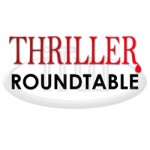 This week we’re all about pacing on The Thriller Roundtable. Conciseness, partial clues, short chapters? ITW Members Brendan P. Rielly, W.D. Gagliani, Vincent Zandri, H.A. Raynes, Adrian Magson, Nina Mansfield, Jean Heller, Donna Warner, Bill Schweigart and Heather Moore describe their favorite techniques for strong pacing.
This week we’re all about pacing on The Thriller Roundtable. Conciseness, partial clues, short chapters? ITW Members Brendan P. Rielly, W.D. Gagliani, Vincent Zandri, H.A. Raynes, Adrian Magson, Nina Mansfield, Jean Heller, Donna Warner, Bill Schweigart and Heather Moore describe their favorite techniques for strong pacing.
~~~~~
 An Unbeaten Man is Brendan Rielly’s first thriller. Brendan is a member of ITW and Maine Writers & Publishers Alliance and studied advanced fiction writing while attending law school. Brendan is chair of Jensen Baird’s litigation department and lives with his wife and three children in Westbrook, Maine, where he is the City Council President. Brendan is the middle of three generations of Maine authors with his father and son (as a high school senior) also published.
An Unbeaten Man is Brendan Rielly’s first thriller. Brendan is a member of ITW and Maine Writers & Publishers Alliance and studied advanced fiction writing while attending law school. Brendan is chair of Jensen Baird’s litigation department and lives with his wife and three children in Westbrook, Maine, where he is the City Council President. Brendan is the middle of three generations of Maine authors with his father and son (as a high school senior) also published.
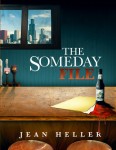 Most of Jean Heller’s career was as an investigative and projects reporter and editor in New York City, Washington, D.C. and St. Petersburg Florida. Her career as a novelist began in the 1990s with the publication of the thrillers, Maximum Impact and Handyman by St. Martin’s Press. Then life intervened and postponed her new book, The Someday File, to publication in late 2014. Jean has won the Worth Bingham Prize, the Polk Award, and is an eight-time Pulitzer Prize nominee.
Most of Jean Heller’s career was as an investigative and projects reporter and editor in New York City, Washington, D.C. and St. Petersburg Florida. Her career as a novelist began in the 1990s with the publication of the thrillers, Maximum Impact and Handyman by St. Martin’s Press. Then life intervened and postponed her new book, The Someday File, to publication in late 2014. Jean has won the Worth Bingham Prize, the Polk Award, and is an eight-time Pulitzer Prize nominee.
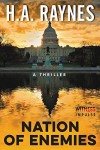 H.A. Raynes’ debut novel, NATION OF ENEMIES, was published by HarperCollins/ Witness Impulse in August of this year. Inspired by a family member who escaped Poland in WWII, Raynes combined lessons from the past with a healthy fear of the modern landscape. A longtime member of Boston’s writing community, Raynes was a finalist in the Massachusetts Screenwriting Competition and has published a short story in the online magazine REDIVIDER.
H.A. Raynes’ debut novel, NATION OF ENEMIES, was published by HarperCollins/ Witness Impulse in August of this year. Inspired by a family member who escaped Poland in WWII, Raynes combined lessons from the past with a healthy fear of the modern landscape. A longtime member of Boston’s writing community, Raynes was a finalist in the Massachusetts Screenwriting Competition and has published a short story in the online magazine REDIVIDER.
 W.D. Gagliani is the author of the novels Wolf’s Trap, Wolf’s Gambit, Wolf’s Bluff, Wolf’s Edge, Wolf’s Cut, Wolf’s Blind (upcoming), and Savage Nights, plus the novellas Wolf’s Deal and The Great Belzoni and the Gait of Anubis. Wolf’s Trap was a finalist for the Bram Stoker Award in 2004. He has published fiction and nonfiction in numerous anthologies and publications such as Robert Bloch’s Psychos, Undead Tales, More Monsters From Memphis, The Midnighters Club, The Asylum 2, Wicked Karnival Halloween Horror, Small Bites, The Black Spiral, and others.
W.D. Gagliani is the author of the novels Wolf’s Trap, Wolf’s Gambit, Wolf’s Bluff, Wolf’s Edge, Wolf’s Cut, Wolf’s Blind (upcoming), and Savage Nights, plus the novellas Wolf’s Deal and The Great Belzoni and the Gait of Anubis. Wolf’s Trap was a finalist for the Bram Stoker Award in 2004. He has published fiction and nonfiction in numerous anthologies and publications such as Robert Bloch’s Psychos, Undead Tales, More Monsters From Memphis, The Midnighters Club, The Asylum 2, Wicked Karnival Halloween Horror, Small Bites, The Black Spiral, and others.
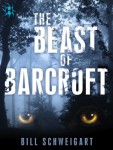 Bill Schweigart revives a bit of forgotten lore from the shadow of Washington, D.C. in his latest novel, THE BEAST OF BARCROFT, which finds a devilish creature stalking the residents of Arlington. Its sequel, NORTHWOODS, will be available February 16, 2016. Bill is a former Coast Guard officer who drew from his experiences at sea to write the taut nautical thriller, SLIPPING THE CABLE. Bill currently resides in Arlington, VA.
Bill Schweigart revives a bit of forgotten lore from the shadow of Washington, D.C. in his latest novel, THE BEAST OF BARCROFT, which finds a devilish creature stalking the residents of Arlington. Its sequel, NORTHWOODS, will be available February 16, 2016. Bill is a former Coast Guard officer who drew from his experiences at sea to write the taut nautical thriller, SLIPPING THE CABLE. Bill currently resides in Arlington, VA.
 Nina Mansfield is a Connecticut based writer. Her debut novel, SWIMMING ALONE a YA mystery, was published by Fire & Ice YA in 2015. Nina has written numerous plays, which have been published and produced throughout United States and internationally. Her graphic novel FAKE ID: BEYOND RECOGNITION, illustrated by Leyla Akdogan, will be out with Plume Snake in 2016. Nina’s short mystery fiction has appeared in Ellery Queen Mystery Magazine and Mysterical-E. She is a member of ITW, MWA, SinC, SCBWI, The Short Mystery Fiction Society and the Dramatists Guild.
Nina Mansfield is a Connecticut based writer. Her debut novel, SWIMMING ALONE a YA mystery, was published by Fire & Ice YA in 2015. Nina has written numerous plays, which have been published and produced throughout United States and internationally. Her graphic novel FAKE ID: BEYOND RECOGNITION, illustrated by Leyla Akdogan, will be out with Plume Snake in 2016. Nina’s short mystery fiction has appeared in Ellery Queen Mystery Magazine and Mysterical-E. She is a member of ITW, MWA, SinC, SCBWI, The Short Mystery Fiction Society and the Dramatists Guild.
 Adrian Magson is the author of 19 crime and spy thrillers, a YA ghost novel and WRITE ON! – a writers’ help book. His latest books are CLOSE QUARTERS, (Severn House), the second in the ‘Watchman’ series of spy thrillers, and THE LOCKER (Midnight Ink – out January 8) the first in a new thriller series featuring private security investigators Ruth Gonzales and Andy Vaslik. In between writing books, he is a regular reviewer for Shots Magazine – and writes the ‘Beginners’ and ‘New Author’ pages for WRITING Magazine.
Adrian Magson is the author of 19 crime and spy thrillers, a YA ghost novel and WRITE ON! – a writers’ help book. His latest books are CLOSE QUARTERS, (Severn House), the second in the ‘Watchman’ series of spy thrillers, and THE LOCKER (Midnight Ink – out January 8) the first in a new thriller series featuring private security investigators Ruth Gonzales and Andy Vaslik. In between writing books, he is a regular reviewer for Shots Magazine – and writes the ‘Beginners’ and ‘New Author’ pages for WRITING Magazine.
 Vincent Zandri is the New York Times and USA Today best-selling author of more than 16 novels including The Innocent, Godchild, The Remains, Moonlight Rises, and Everything Burns. His novel Moonlight Weeps won the 2015 Thriller Award for Best Paperback Original, and is currently nominated for the Shamus Award as well. He is also the author of numerous Amazon best-selling digital shorts, Pathological, True Stories, and Moonlight Mafia among them. Recently, Zandri was the subject of a major feature by The New York Times. He has also made appearances on Bloomberg TV and FOX News. In December 2014, Suspense Magazine named Zandri’s The Shroud Key as one of the best books of 2014.
Vincent Zandri is the New York Times and USA Today best-selling author of more than 16 novels including The Innocent, Godchild, The Remains, Moonlight Rises, and Everything Burns. His novel Moonlight Weeps won the 2015 Thriller Award for Best Paperback Original, and is currently nominated for the Shamus Award as well. He is also the author of numerous Amazon best-selling digital shorts, Pathological, True Stories, and Moonlight Mafia among them. Recently, Zandri was the subject of a major feature by The New York Times. He has also made appearances on Bloomberg TV and FOX News. In December 2014, Suspense Magazine named Zandri’s The Shroud Key as one of the best books of 2014.
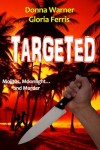 Donna Warner is a crime fiction novelist and freelance literary editor. Her debut novella, Targeted, is co-authored with award winning novelist, Gloria Ferris. Targeted will be released by Black Opal Books on Dec. 5, 2015. Donna enjoys helping others with their communication projects including English as a Second Language (ESL) students. She is an avid reader of thrillers and enjoys networking with other authors. Donna resides on a country property near Guelph, Ontario, Canada and spends summers at their cottage — kayaking, boating, and fishing. She is a member of the International Thriller Writers and the Crime Writers of Canada.
Donna Warner is a crime fiction novelist and freelance literary editor. Her debut novella, Targeted, is co-authored with award winning novelist, Gloria Ferris. Targeted will be released by Black Opal Books on Dec. 5, 2015. Donna enjoys helping others with their communication projects including English as a Second Language (ESL) students. She is an avid reader of thrillers and enjoys networking with other authors. Donna resides on a country property near Guelph, Ontario, Canada and spends summers at their cottage — kayaking, boating, and fishing. She is a member of the International Thriller Writers and the Crime Writers of Canada.
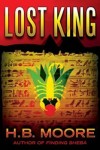 Heather B. Moore is a USA Today bestselling author of more than a dozen historical novels and thrillers, written under pen name H.B. Moore. She writes women’s fiction, romance and inspirational non-fiction under Heather B. Moore. This can all be confusing, so her kids just call her Mom. Heather attended Cairo American College in Egypt, the Anglican School of Jerusalem in Israel, and earned a Bachelor of Science degree from Brigham Young University in Utah.
Heather B. Moore is a USA Today bestselling author of more than a dozen historical novels and thrillers, written under pen name H.B. Moore. She writes women’s fiction, romance and inspirational non-fiction under Heather B. Moore. This can all be confusing, so her kids just call her Mom. Heather attended Cairo American College in Egypt, the Anglican School of Jerusalem in Israel, and earned a Bachelor of Science degree from Brigham Young University in Utah.
- LAST GIRL MISSING with K.L. Murphy - July 25, 2024
- CHILD OF DUST with Yigal Zur - July 25, 2024
- THE RAVENWOOD CONSPIRACY with Michael Siverling - July 19, 2024
